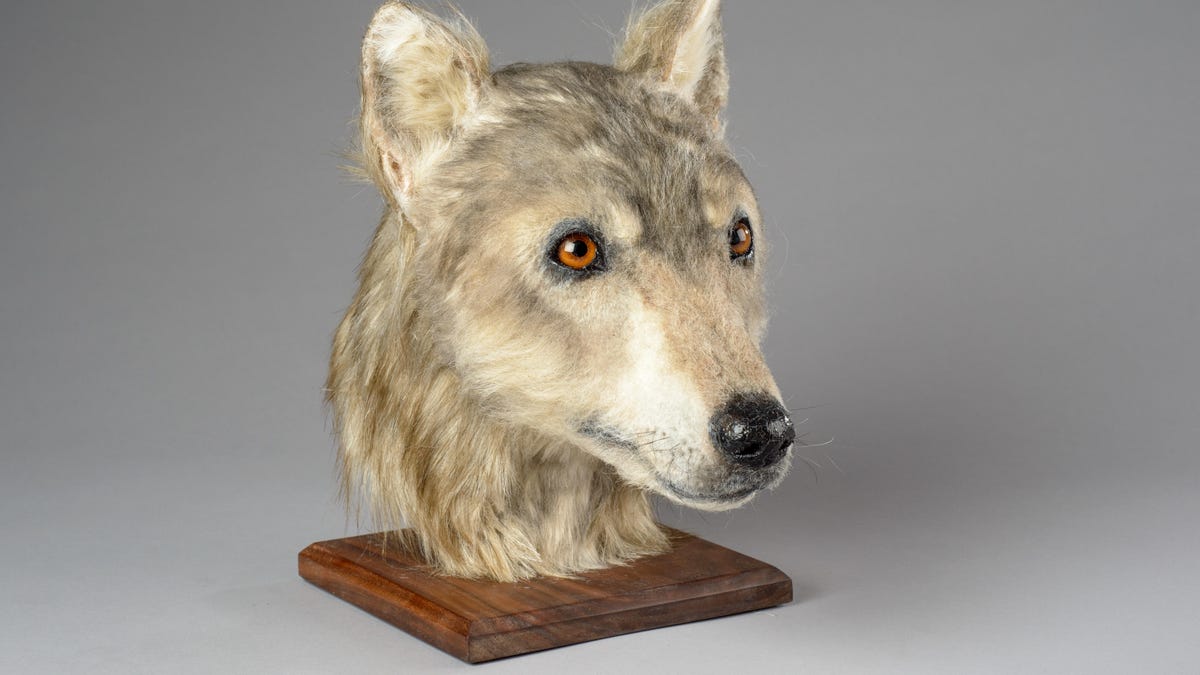This 4,500-year-old reconstructed dog looks like a Game of Thrones direwolf
This cute Neolithic dog looks so real you'll want to pet it.

This 4,500-year-old dog looks like new thanks to 3D printing.
Scientists have re-created the head of an ancient dog using CT scans, a 3D-printed skull and forensic reconstruction usually reserved for humans.
The Neolithic dog, thought to have lived 4,500 years ago, is estimated to originally have been the size of a large collie, according to Alison Sheridan, principal archaeological research curator in the Department of Scottish History and Archaeology at National Museums Scotland.
However, the reconstructed model looks less like a collie and more like a Game of Thrones direwolf -- or in the real world, the European gray wolf.
The original canine skull was discovered at a burial site in Cuween Hill in the Orkney islands off Scotland's northeastern coast. The reconstruction, commissioned by Historic Environment Scotland, revealed the furry face of the pooch.
The skull, now in the collection of National Museums Scotland, was CT-scanned by the Diagnostic Imaging Service staff at Edinburgh University's Royal (Dick) School of Veterinary Studies. This helped HES' digital documentation team to make a 3D-printed version of the skull, which was then turned into a realistic model of the dog's head.
This chambered cairn found at Cuween Hill in Scotland was constructed during the Neolithic period.
Forensic artist Amy Thornton added muscle, skin and hair to the skull in the same way she re-creates a recognizable face from a human skull.
"This reconstruction has been a particularly interesting project to be involved in, as it marks the first time I've employed forensic methods that would usually be used for a human facial reconstruction and applied these to an animal skull," Thornton said in a statement.
"This brought its own set of challenges, as there is much less existing data relating to average tissue depths in canine skulls compared to humans," Thornton added.
Radiocarbon dating of the dog bones found inside the chambered cairn (a Neolithic burial monument) at Cuween shows that the ancient dogs were placed in the chamber more than 500 years after the passage tomb was built.
"Just as they're treasured pets today, dogs clearly had an important place in Neolithic Orkney, as they were kept and trained as pets and guards and perhaps used by farmers to help tend sheep," Steve Farrar, interpretation manager at HES, said in a statement.
The canine reconstruction is part of a wider project to use new technology to share the stories of Orkney's Neolithic chambered tombs with visitors.

